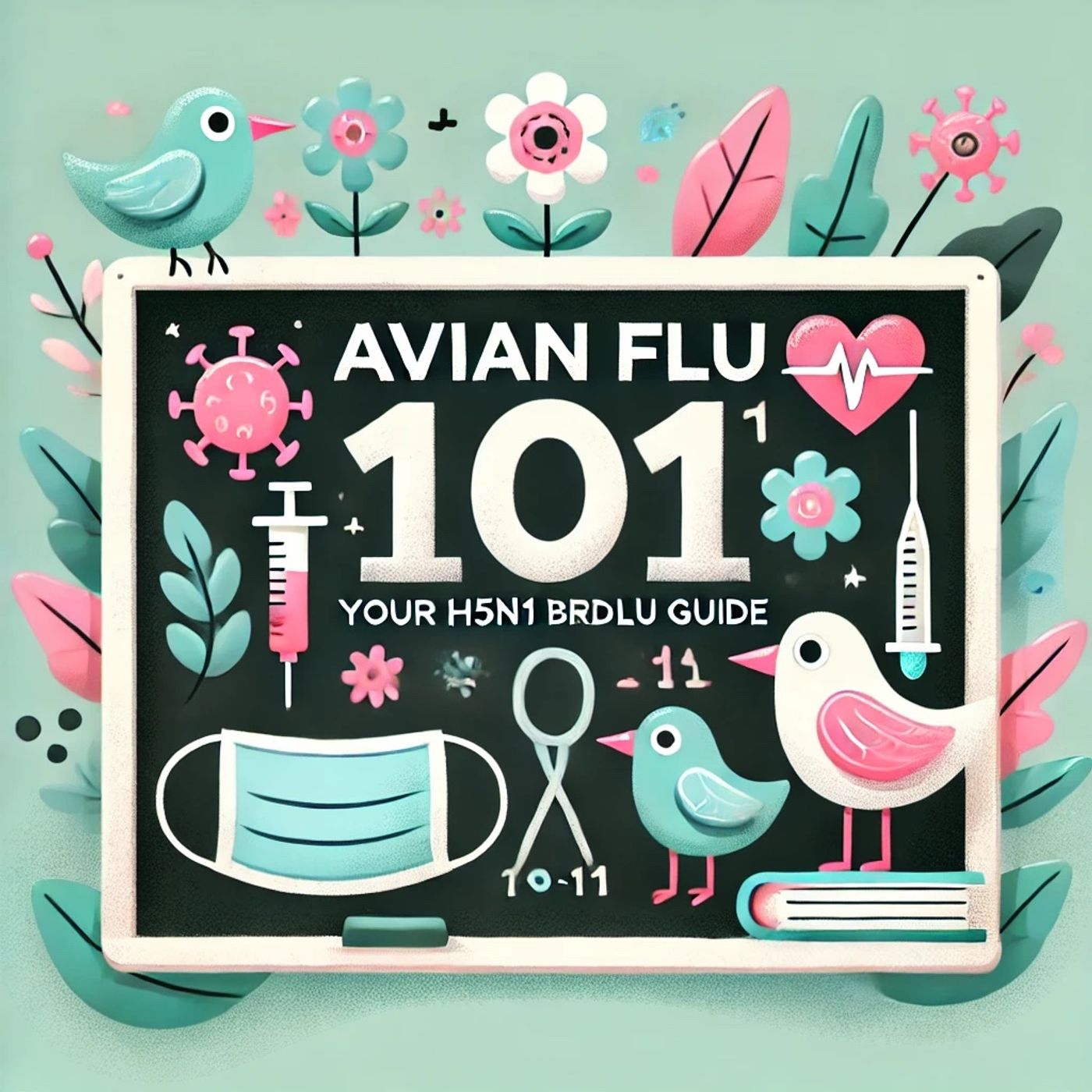Podcast Episode Details
Back to Podcast Episodes
H5N1 Bird Flu Explained: What You Need to Know About Avian Influenza and Human Risk in 2024
Welcome to Avian Flu 101: Your H5N1 Bird Flu Guide, brought to you by Quiet Please. I’m your host, and in the next three minutes, I’ll take you from zero to bird flu literate without any jargon or panic—just the facts.
Let’s start simple: what is avian flu? Avian flu, also called bird flu, is a disease caused by viruses that mainly infect birds. The most talked-about strain right now is H5N1. These letters and numbers describe two proteins—hemagglutinin, that’s “H”, and neuraminidase, that’s “N”—sitting on the virus’s shell. H5N1 is one kind of many possible combinations that belong to the larger family called influenza A viruses, the same broad group responsible for seasonal human flu. The ‘highly pathogenic’ label means this strain can cause severe disease in poultry, often wiping out flocks rapidly, but in humans, the current strains in the US have rarely caused serious illness according to the University of Florida’s public health experts.
A quick history check. H5N1 emerged in 1996 and first alarmed the world with large bird die-offs. Over the years, it spread to poultry and wild birds around the world, sometimes jumping to mammals—including farm animals and even sea mammals, as the USDA observes. Each jump gives the virus a chance to adapt and possibly find easier ways to spread to or between humans.
What about the birds-to-humans leap? Picture it like a package being handed off at a busy train station. Most packages never make it past security—that’s the species barrier. But sometimes, with enough tries, a package slips through. This happens when people work closely with infected poultry or dairy cows. According to clinicians’ groups and the CDC, most human H5N1 infections so far have been mild, often eye or breathing symptoms, and usually occur in agricultural workers.
Let’s make sense of the terms. Avian flu, bird flu, H5N1, and highly pathogenic avian influenza—or HPAI—are often used interchangeably. They all refer to disease caused by the H5N1 type A virus, mainly in poultry and wild birds. Pandemic flu, on the other hand, is a type that spreads widely in people—a very different scenario than what we see with bird flu at present.
People often ask, how does H5N1 compare to what we already know, like seasonal flu or COVID-19? According to Johns Hopkins and the CDC, both avian flu and seasonal flu are relatives inside the influenza A family but are different subtypes. Seasonal flu comes around each year, spreads quickly among people, but is usually mild for most. H5N1 is mainly a severe bird disease, only jumping to people in rare circumstances. COVID-19, caused by a totally different kind of virus, spreads much more easily between people. Seasonal flu is usually far less deadly than either H5N1 or COVID-19 in severe cases, but right now, H5N1 is nowhere near as prone to infecting humans as COVID-19 was.
Now a quick Q&A:
Is there a vaccine? In the US, three H5N1 vaccines are licensed for high-risk groups, but they aren’t for general use. Trials for new vaccines are ongoing.
How do you treat it? Antivirals like Tamiflu are effective if started early—much like seasonal flu.
Should I worry? For most people, risk is still very low. Those who work with poultry or dairy cows need extra protection.
Thank you for tuning in today to Avian Flu 101. Come back next week for more knowledge that matters. This has been a Quiet Please production. For more, check out QuietPlease dot AI.
For more http://www.quietplease.ai
Get the best deals https://amzn.to/3ODvOta
This content was created in partnership and with the help of Artificial Intelligence AI
Published on 16 hours ago